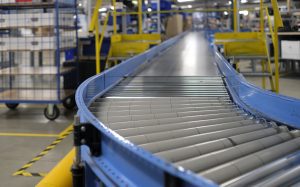A valve actuator can be explained as any device that utilises a source of power to control the functioning of a valve. This source of power can be anything – a human operating a manual gearbox, or it can be a smart electronic device with smooth control and measuring features. With the growth of micro-circuitry, the function of an actuator has become more sophisticated. Traditional valve actuators were essentially a geared motor with position sensing switches. Modern-day valve actuators have more advanced capabilities. They not only perform functions of opening and closing valves but can also check on the functional status and well being of a valve as well as offer predictive maintenance data
Some physical locations are hazardous or precarious to human beings. In these circumstances, an automated controlling device can mitigate the risk to the individuals involved. In some situations, critical valves need to be controlled in situations of emergency circumstances. The valve actuator can reduce the risk of serious environmental mishaps as well as to mitigate damages caused in such situations. When some processes require high pressure and large line sizes, the load of power needed to operate a valve can be very high. In these conditions, the intensified mechanical advantage and usage of high output motors can facilitate easy operation of large valves. There are 4 main types of actuators –
Electric Multi-Turn Actuators
This is the most common and widespread actuator used. The primary advantage of this type of actuator is that all accessories are included in the package and are physically and environmentally safeguarded. It has all the basic functions integrated in a compact housing which can be watertight, explosion proof and in most circumstances, submersible.
Electric Quarter-Turn Actuators
These units are quite similar to Electric Multi-Turn Actuators. These actuators are compact in nature and are ideal for smaller valves.
Fluid Power Quarter-Turn Actuators
These Actuators, which function on hydraulics are extremely dynamic. The primary factor attributing this is they can be utilised wherever there is no readily available source of electricity or power.
Fluid Power Multi-Turn Actuators
These forms of actuators are recurrently used when multi-turn output is needed to control a linear type of valve, for example, a gate or globe valve. In normal circumstances, electric actuators are used for this type of valve. Although, if there is no electric power supply available to use, then pneumatic or hydraulic motors can be utilised to operate multi-turn actuators.
As automation is growing across industries, physical work is being gradually phased out by technology and automatic controls. The importance of valve actuators to develop an interface between the control and the physical action of a valve has increased. There is a critical need for safe working conditions and process safety that valve actuators can offer.

